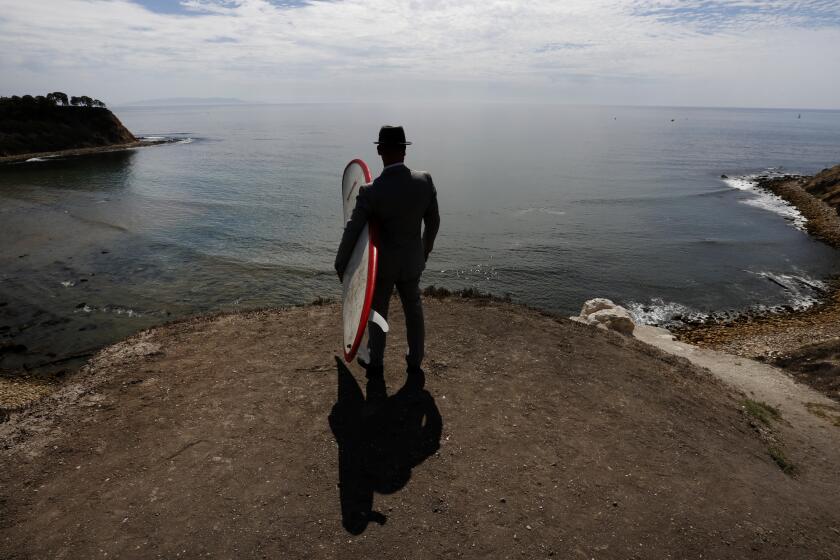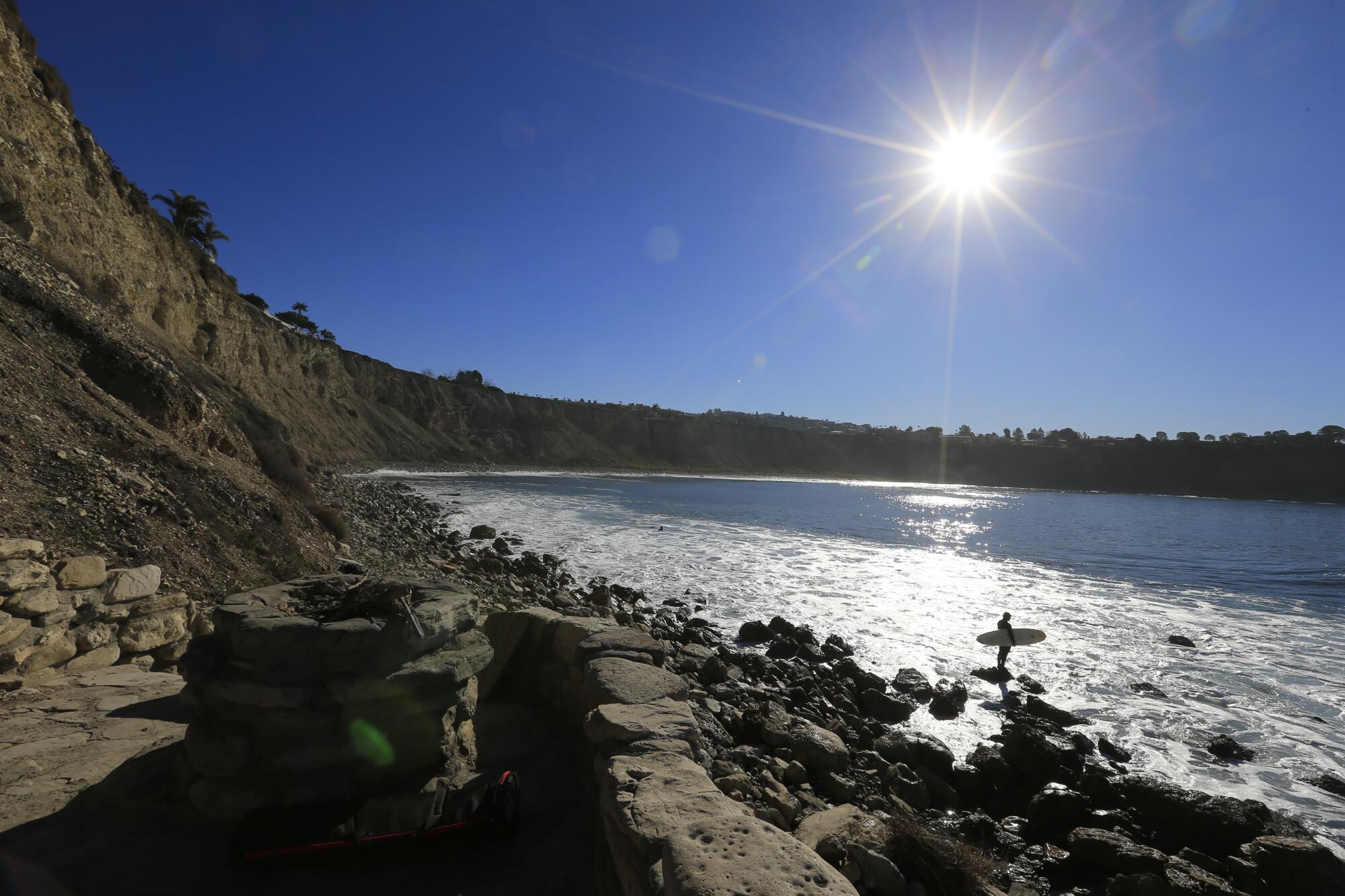
- Share via
Lunada Bay is the stuff big wave surfers’ dreams are made of.
During a heavy swell, 20-foot waves unfurl in a perfect right-hand line, delivering a potent blend of adrenaline and serenity.
“It feels like a little hit of a drug, honestly, because it’s just so beautiful, so magical,” surfer Sofly Matturi said. “The wave is your canvas.”
When the surf’s up, only a dozen or so surfers can be found riding the wave, tucked in a cove beneath the cliffs of the Palos Verdes Peninsula. Visiting Lunada Bay is like taking a time machine back to 1960, before hundreds of surfers crowded Southern California’s coastline.
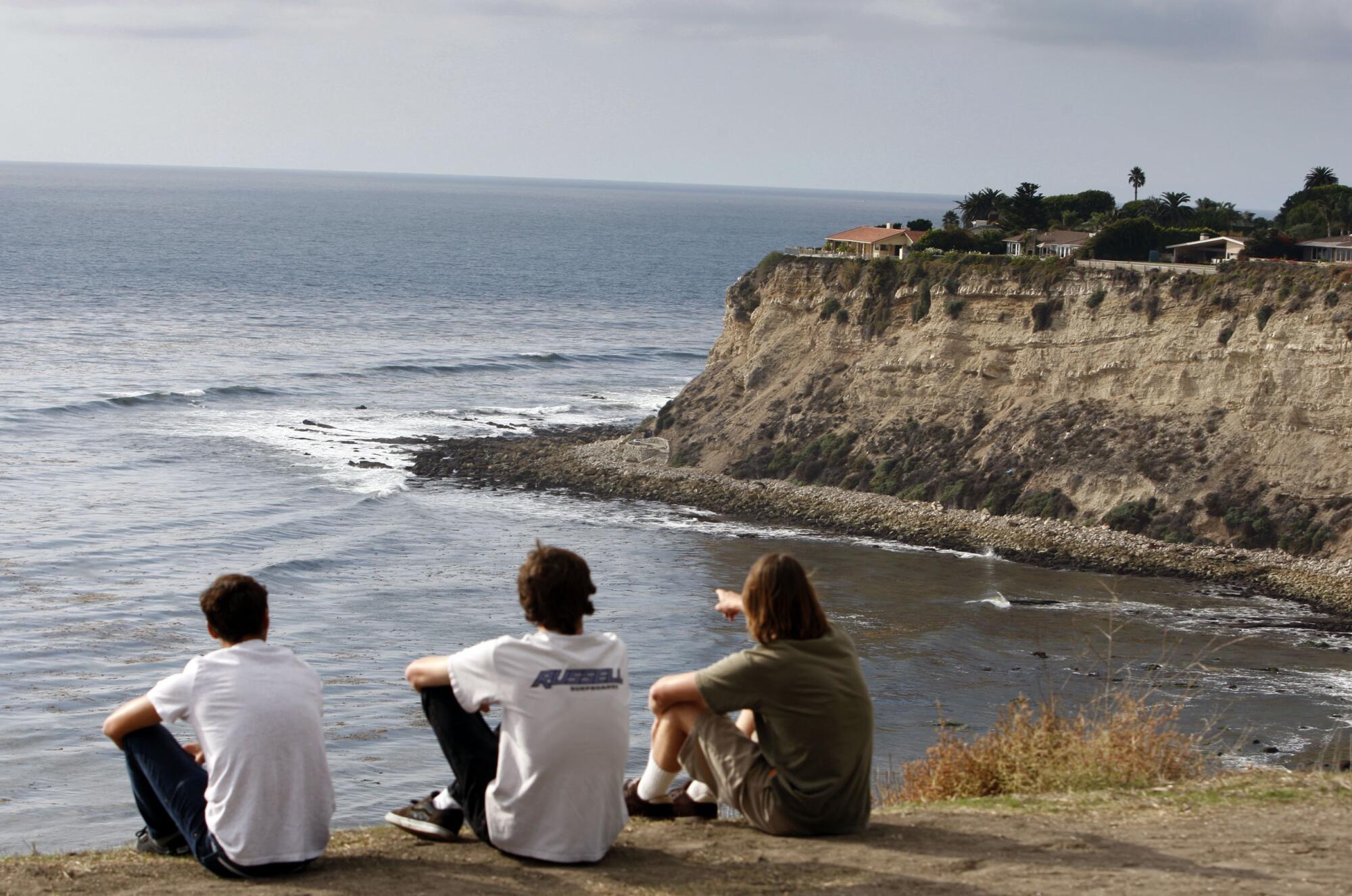
Many surfers say there’s a reason for that.
For six decades, a group known as the Bay Boys has sought to rule the waves here, slashing the tires of nonlocals, pelting rocks at surfers descending the steep cliffside trail and physically harassing anyone brave enough to paddle out.
The Bay Boys’ reign has sparked years of controversy and emerged as a flash point for beach access in the upscale community of Palos Verdes Estates, culminating with a landmark lawsuit demanding the city do more to protect surfers from harassment.
The city agreed to settle the suit last month with a promise to protect public access to Lunada Bay. Additionally, 11 alleged surf gang members agreed to either pay steep fines or stay away from the break for a year.
But some surfers are skeptical the settlement alone will change the vibes.
A settlement reached Friday appears to herald the end of the Bay Boys surf gang’s six-decade reign over Lunada Bay’s premier waves.
Matturi, who lives in Long Beach, reports facing intimidation and harassment whenever he paddles out. During a swell in April, another surfer tried to push him off his board mid-ride, yelling, “Get out, you’re not supposed to be surfing here,” he said.
Several other surfers, some of whom spoke to The Times anonymously, said they had also faced harassment.
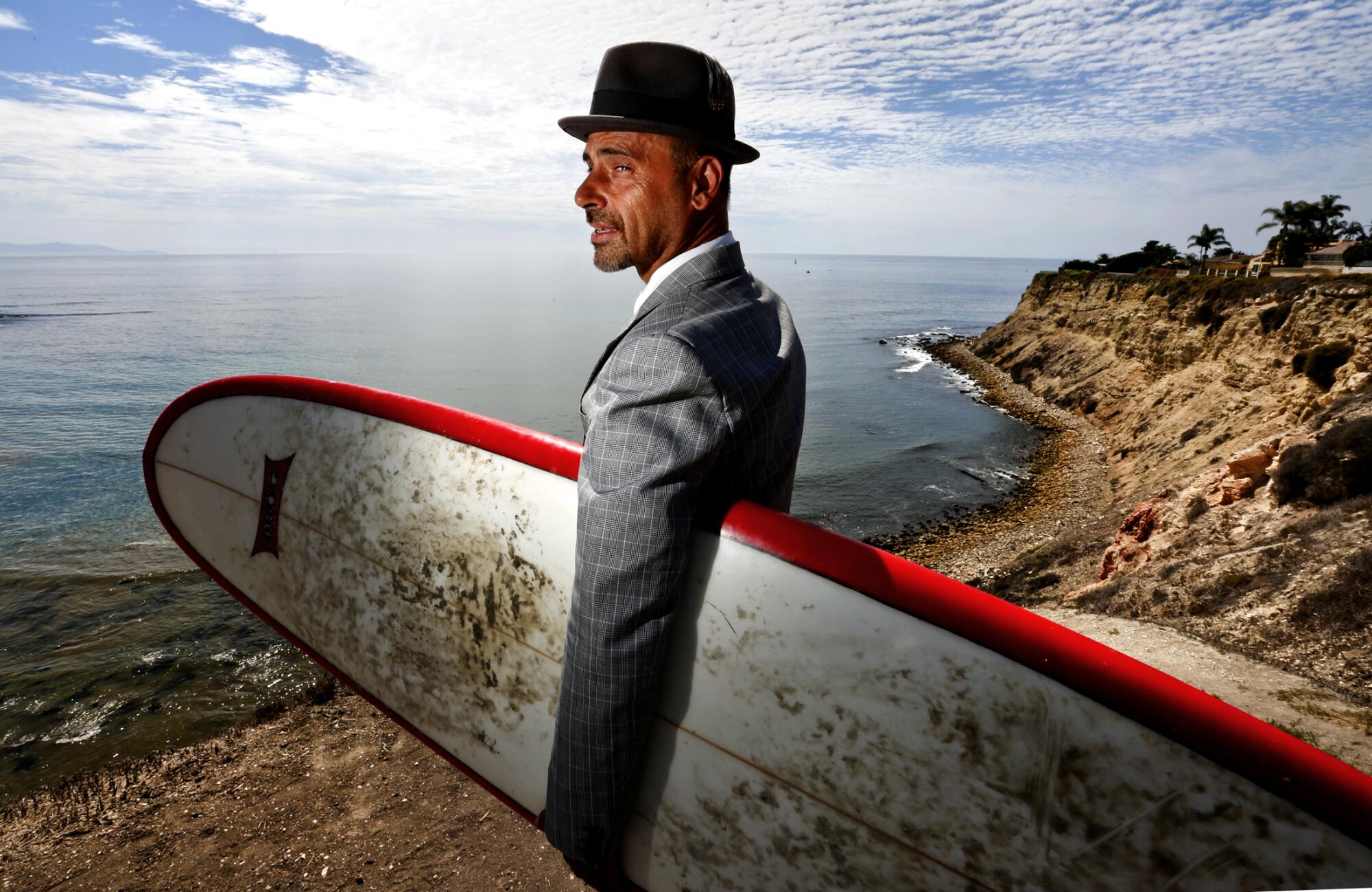
When attorneys for the plaintiffs filed the lawsuit in 2016, they identified at least 85 people — core gang members, friends, family — who were “allowed” to surf the bay.
John MacHarg, a born-and-raised Palos Verdes Estates surfer, said the settlement by itself would not put a stop to localism — the belief that local surfers own the break.
“I think [the Bay Boys] still feel like, ‘Oh, we’re protecting this sacred place,’” MacHarg said. “They don’t realize that the more sacred it is, the more of a sin it is to do their so-called protecting.”
MacHarg and Matturi did say the gang’s more extreme, and clearly criminal, tactics — like throwing punches and slashing tires — have faded in recent years. However, acts that are harder to prosecute such as verbal harassment remain rampant, and in the water, members frequently perform maneuvers that put nonlocals in dangerous situations, Matturi said.
“If you get on a good wave, they’re going to instantly try to burn you,” Matturi said. “They’ll take off in front of you and then try to do a really long bottom turn where they’ll try to push you into the rocks.”
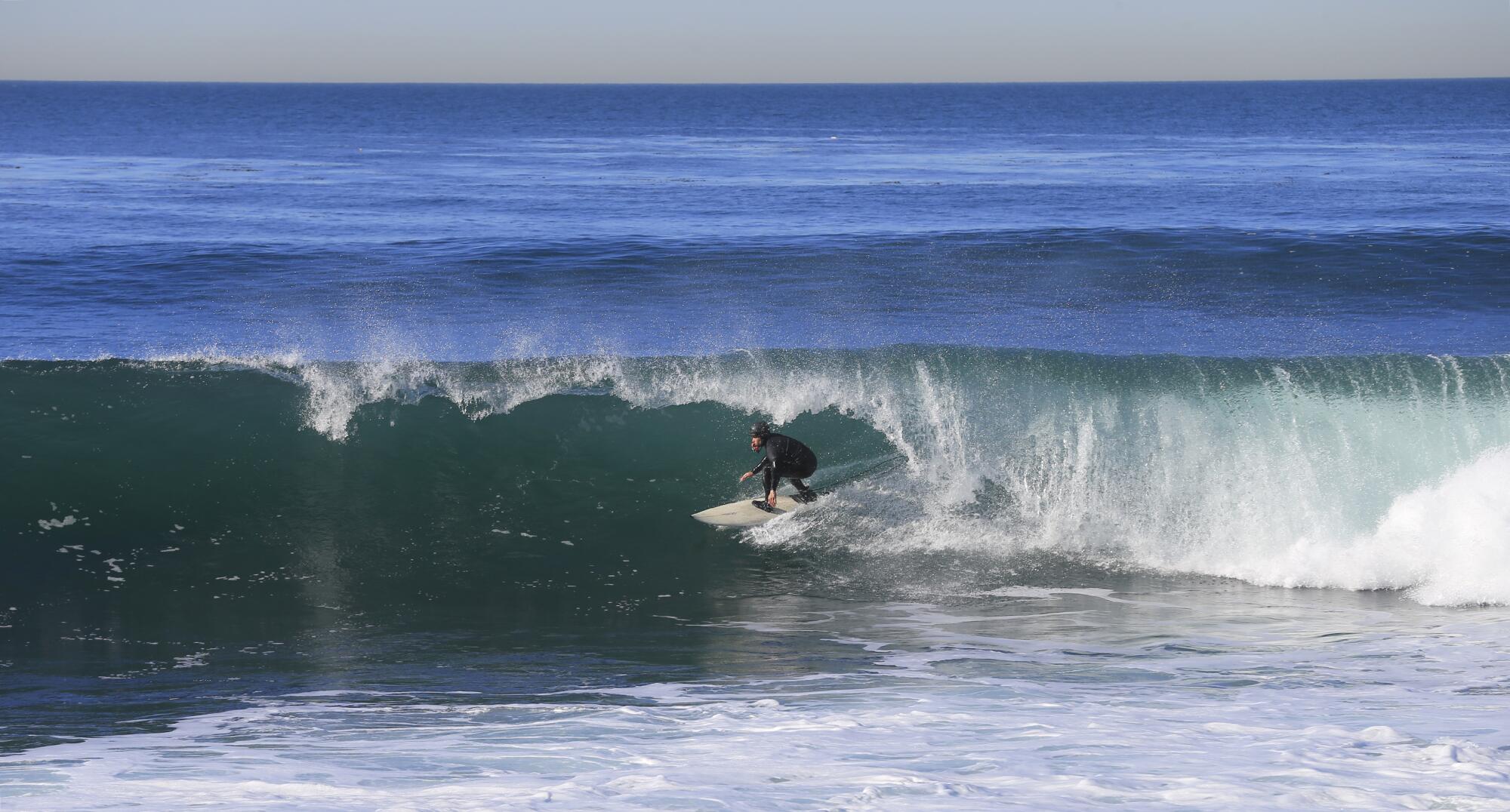
City Manager Kerry Kallman told The Times, however, the city does not stand for this behavior at any of its beaches.
“It is not tolerated. It really hasn’t ever been tolerated,” he said. “So anyone experiencing [it] is encouraged to come to call the Police Department.”
The culture of localism runs deep in Palos Verdes Estates, a tight-knit, wealthy community with around 13,300 residents and its own police department. In fact, maintaining local control of the coastline was one of the reasons residents voted to establish their own city in 1939, according to historical news articles.
The Bay Boys started out as a fairly harmless surf club in the 1960s, according to reporting from the Daily Breeze, but as the spot’s reputation for stellar waves grew in the ’70s, members began using increasingly violent means to keep outsiders away, and the lawsuit alleged that city officials historically turned a blind eye to their actions.
“People here do not like outsiders in general, they pay a price to live here,” former Palos Verdes Estates Police Chief Timm Browne said in a 2001 documentary interview. “They have a beautiful view of the ocean from most of the homes in the city, so they are protective of their community as a whole, surfers or nonsurfers.”
During court testimony in August, Browne said that he had wanted to purchase Jet Skis to patrol the waters, but that city leadership at the time feared it would harm community relations.
The former chief, who served from 1998 to 2004, recalled being told that efforts to address issues at Lunada Bay would bring “outsiders” and “riffraff” into the community, and “we don’t want that.”
In 2016, the police planned a sting operation targeting the bullying tactics of local surfers, but called it off a day in advance after discovering someone had tipped off the Bay Boys, according to court documents submitted as part of the lawsuit.
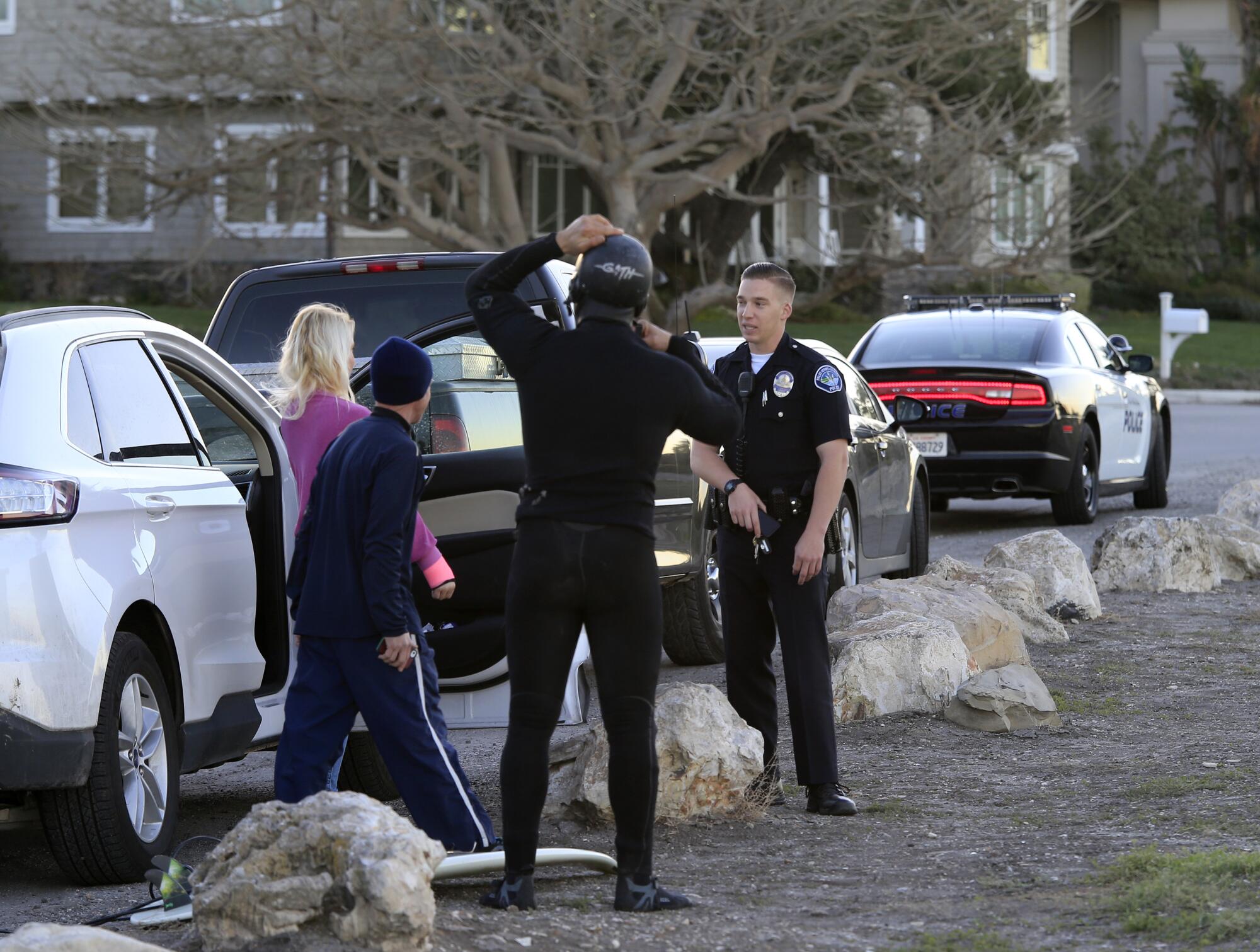
Localism was a rampant problem along the California coastline from the 1970s through the early 2000s. But as coastal population and the popularity of surfing boomed, it became near impossible for locals to assert ownership over a particular break.
Lunada Bay has remained the most notorious exception to this rule.
The recently settled lawsuit was filed against Palos Verdes Estates and a dozen alleged Bay Boys members, alleging that the surf gang’s behavior and the city’s failure to uphold public beach access violated the California Coastal Act.
Plaintiff Cory Spencer said that while he was surfing Lunada in 2016, a member deliberately ran him over with a surfboard, slicing open his wrist.
Shortly thereafter, Spencer filed the lawsuit alongside the nonprofit organization Coastal Protection Rangers and fellow nonlocal surfer Diana Milena Miernik — who alleged that she was verbally and sexually harassed by the Bay Boys.
Under the settlement agreement, the city will upgrade infrastructure to make it clear that Lunada Bay is open to the public.
This includes improving the trail atop the cliffs, adding signs indicating that beach access is available to everyone and installing benches along the bluffs. The city also agreed to train staff in coastal access law and report all allegations of bullying to the California Coastal Commission.
“I think the city’s going to be, maybe, a little bit better of a partner at this point rather than a foe to make Lunada more open,” Spencer said. “We hope that’s what the lawsuit accomplished.”
What the suit also accomplished was holding individual Bay Boys accountable, several of whom paid fines of up to $90,000 in order to continue surfing at Lunada.
In settling the case, the city did not admit guilt to allegations that it had failed to adequately protect beach access. And the settlement, reached on Sept. 20, does not outline new strategies for responding to incidents of harassment, bullying or localism.
This lawsuit was not the first effort to open up Lunada Bay surfing to nonlocals.
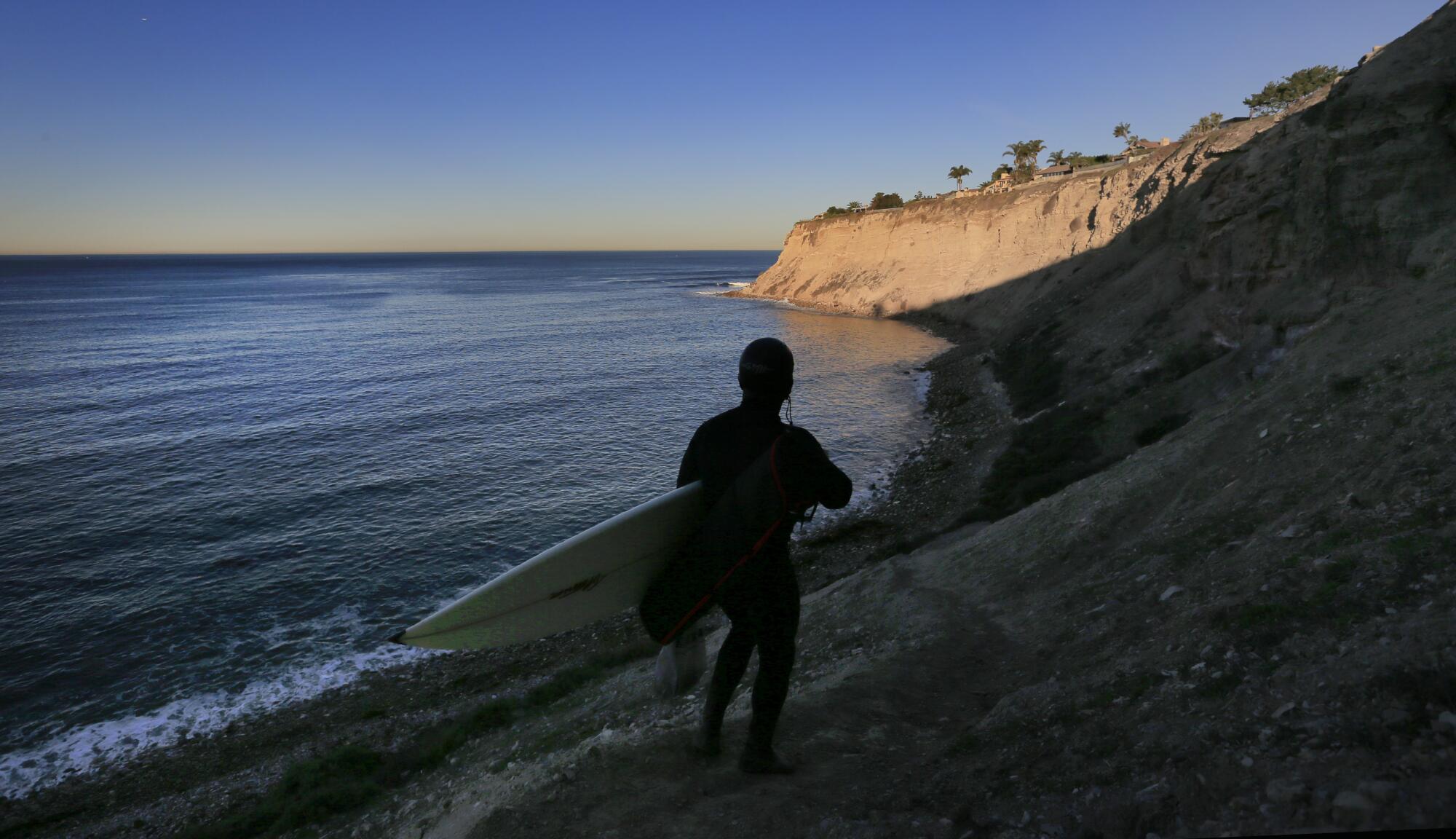
In 1995, Geoff Hagins, a surfer from Torrance, filed a lawsuit alleging that locals had engaged in assaults, vandalism, harassment and “terrorist-like” activities to drive away outsiders. Local surfer Peter McCullom paid $15,000 to settle the suit, and the city agreed to issue a public proclamation that the beach is open to everyone.
“We’ve protected this beach for years,” McCullom told The Times in 1995. “This is why: so we can have driftwood on the beach rather than Kentucky Fried Chicken boxes. If this place was ever opened up, it would be packed with lowriders.”
Localism at Lunada Bay has long been tinged with classism and racism.
When Chris Taloa, a native Hawaiian surfer, organized a peaceful paddle out at Lunada Bay on Martin Luther King Jr. Day in 2014, a local came up to him in blackface and an Afro wig and told him, “You don’t pay enough taxes to be here.”
Matturi, who is Black, said he still feels racially charged aggression when he paddles out at Lunada.
“It’s like half is localism, half is racism,” he said. “Either way, they don’t like me.”
Despite the harassment he faces, Matturi believes the ocean belongs to everyone, and the magic of a 15-foot Lunada Bay barrel is enough to keep luring him back.
MacHarg, the Palos Verdes native who is opposed to the Bay Boys’ bullying, said the recent settlement offers a key window of opportunity for outsiders to assert their right to surf Lunada.
“The moral of the story is: Get out there and go surf, break it open,” he said. “The door has been opened, but if nobody goes through the door, it’s not going to make any difference.”
More to Read
Sign up for This Evening's Big Stories
Catch up on the day with the 7 biggest L.A. Times stories in your inbox every weekday evening.
You may occasionally receive promotional content from the Los Angeles Times.
